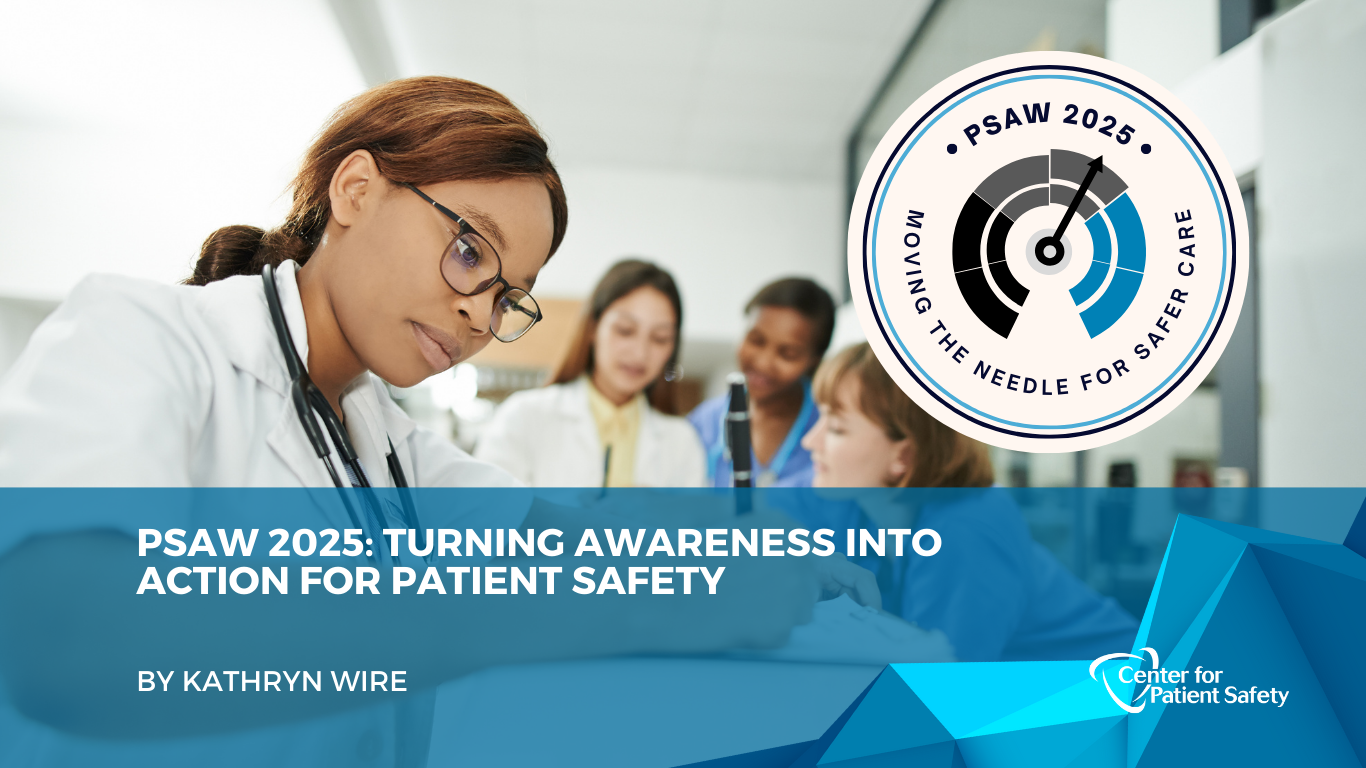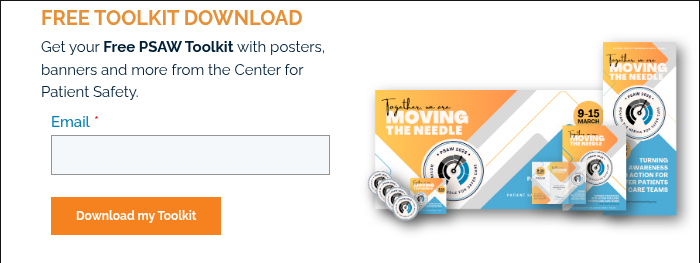PSAW 2025: Turning Awareness into Action for Patient Safety
Turning awareness into action for patient safety requires a multi-faceted approach that involves collaboration, engagement, and continuous improvement. By embracing the theme of "Moving the Needle" and implementing strategies to foster a culture of safety, healthcare organizations can make significant strides in enhancing patient safety and delivering high-quality care.

Embracing the Theme of Moving the Needle
This year, healthcare payors and providers have focused on putting patient safety front and center. Our theme for Patient Safety Awareness Week, "Moving the Needle," emphasizes the importance of transforming awareness into tangible actions. More than just a call to recognize safety issues, the initiative reflects an industry-wide expectation to implement strategies that enhance patient safety. By embracing this theme, healthcare organizations can focus on continuous improvement, ensuring that patient safety becomes part of standard practice.
The transition from mere awareness to action requires a deep commitment from healthcare providers. It involves critically analyzing current practices and identifying areas for improvement. This proactive approach not only helps mitigate risks but also builds a foundation for safer care environments. By adopting the "Moving the Needle" mindset, healthcare facilities can foster a culture that expects improvement in every aspect of patient care.
Creating a Collaborative Environment for Safer Care
When healthcare teams work together, they can identify potential hazards and implement preventive measures more efficiently. Collaboration among healthcare professionals fosters an atmosphere of trust and open communication, which is necessary for identifying early signs of safety issues and addressing them promptly.
Creating such an environment requires intentional efforts to break down silos and encourage interdepartmental communication. Regular team meetings, cross-functional training sessions, and open forums for discussion can help nurture a culture of collaboration. Additionally, leadership plays a critical role in modeling collaborative behaviors and setting expectations for teamwork. By prioritizing collaboration, healthcare organizations can ensure that every team member is aligned with the shared goal of enhancing patient safety.
Engaging Patients and Families in the Safety Process
By involving patients and their families in the care process, healthcare providers can gain valuable insights and foster a sense of partnership. Encouraging patients to ask questions and express concerns creates a more transparent and accountable healthcare environment.
Healthcare organizations can implement strategies such as patient education programs, feedback surveys, and family inclusion in care planning to enhance patient engagement. By actively listening to the voices of patients and families, providers can identify areas for improvement and tailor safety initiatives to meet the unique needs of those they serve. This collaborative approach not only improves patient satisfaction but also contributes to safer healthcare outcomes.
Celebrating Achievements and Recognizing Contributions
Patient Safety Awareness Week is an ideal time to celebrate achievements and recognize the contributions of individuals and teams dedicated to improving patient safety. Acknowledging successes not only boosts morale but also reinforces the importance of ongoing safety efforts within the organization.
Healthcare facilities can organize events, award ceremonies, and public acknowledgments to highlight the hard work and dedication of their staff. Sharing success stories and case studies can inspire others within the organization and the broader community to continue striving for excellence in patient safety. By celebrating these achievements, healthcare organizations can create a positive and motivating culture that values and prioritizes safety.
Developing a Customized Plan for Ongoing Safety Improvements
To ensure continuous progress in patient safety, healthcare organizations must develop customized plans tailored to their specific needs and challenges. This involves setting clear goals, identifying key performance indicators, and establishing a framework for ongoing evaluation and improvement.
A customized plan should include strategies for risk assessment, staff training, and process optimization. It should also incorporate feedback mechanisms to gather insights from both staff and patients. By regularly reviewing and updating these plans, healthcare organizations can adapt to changing circumstances and maintain a strong focus on patient safety.
Leadership commitment is important in driving these initiatives forward. By allocating resources and providing support for safety programs, leaders can empower their teams to implement effective safety measures and sustain long-term improvements.
Showcasing Patient Safety Efforts to the Community
Engaging the community in patient safety initiatives can amplify the impact of these efforts and foster a culture of transparency and trust. By showcasing their commitment to safety, healthcare organizations can strengthen their reputation and build stronger relationships with patients and their families.
Community outreach programs, public forums, and social media campaigns are effective ways to highlight patient safety efforts. By sharing information about safety initiatives, success stories, and ongoing improvements, healthcare organizations can educate the community and encourage active participation in the safety process.
Transparency builds trust and encourages community members to become advocates for safe care. An involved community creates a stronger support system for healthcare organizations, ultimately leading to better patient outcomes and a safer healthcare environment.
In Summary
Turning awareness into action for patient safety requires a multi-faceted approach that involves collaboration, engagement, and continuous improvement. By embracing the theme of "Moving the Needle" and implementing strategies to foster a culture of safety, healthcare organizations can make significant strides in enhancing patient safety and delivering high-quality care.

.png)
